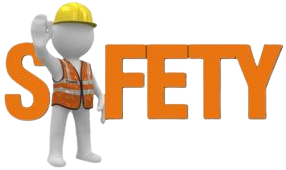Fire Detection and Monitoring
- Real-Time Fire Detection: Computer vision systems can analyze video feeds from surveillance cameras to detect smoke, flames, or heat signatures, enabling rapid response to potential fires.
- Thermal Imaging: Using infrared cameras, computer vision can identify hotspots or areas of overheating, allowing for preventive measures before a fire starts.
2. Hazard Identification
- Identifying Safety Hazards: Computer vision can scan environments for potential fire hazards, such as flammable materials or blocked exits, helping to enforce safety protocols.
- Monitoring Compliance: Automated systems can check that safety equipment (e.g., fire extinguishers, hoses) is in place and accessible, ensuring compliance with safety regulations.
3. Emergency Response and Evacuation
- Real-Time Situation Awareness: In emergency situations, computer vision can provide emergency responders with real-time data about fire locations, smoke spread, and potential escape routes.
- Crowd Monitoring: Computer vision can analyze crowd movement in real time to identify bottlenecks during evacuations, helping to optimize escape routes and improve safety.
4. Predictive Maintenance
- Equipment Monitoring: Computer vision can be used to inspect fire safety equipment (e.g., sprinkler systems, alarms) for signs of wear or malfunction, prompting maintenance before failures occur.
- Condition Assessment: Using image analysis, organizations can assess the condition of fire barriers, hoses, and extinguishers to ensure they are functioning correctly.
5. Training and Simulation
- Training Simulations: Computer vision can be integrated into virtual reality (VR) training programs to simulate fire scenarios, allowing responders to practice their skills in a safe environment.
- Behavioral Analysis: AI can analyze training drills to assess the performance of personnel, identifying areas for improvement in fire response tactics.
6. Post-Incident Analysis
- Incident Review: After a fire incident, computer vision can analyze video footage to understand the sequence of events, contributing factors, and response effectiveness, helping to improve future safety measures.
- Damage Assessment: Automated systems can evaluate damage through visual analysis, assisting in insurance claims and recovery planning.
7. Integration with Smart Building Systems
- Smart Fire Safety Systems: Computer vision can be integrated with building management systems to provide a comprehensive view of fire safety, automating alerts and responses based on visual data.
- IoT Integration: Combining computer vision with IoT sensors can enhance the accuracy of fire detection and monitoring systems, providing a multi-layered approach to safety.
8. Remote Surveillance and Control
- Remote Monitoring: Security cameras equipped with computer vision can monitor facilities remotely, enabling quick detection and response to fire-related incidents without needing on-site personnel.
- Drone Surveillance: Drones equipped with computer vision can conduct aerial surveys of large areas or inaccessible locations to detect fires or hazards, especially in industrial settings or wildland areas.
9. Compliance and Reporting
- Automated Reporting: Computer vision can assist in generating compliance reports by analyzing footage for adherence to safety protocols, reducing manual oversight and increasing accountability.
10. Wildfire Detection and Management
- Early Detection of Wildfires: Computer vision can analyze satellite images or drone footage to detect early signs of wildfires, enabling quicker response and containment efforts.
- Monitoring Fire Spread: In wildfire management, computer vision can track the movement of flames and smoke, helping to inform firefighting strategies.


Leave a Reply